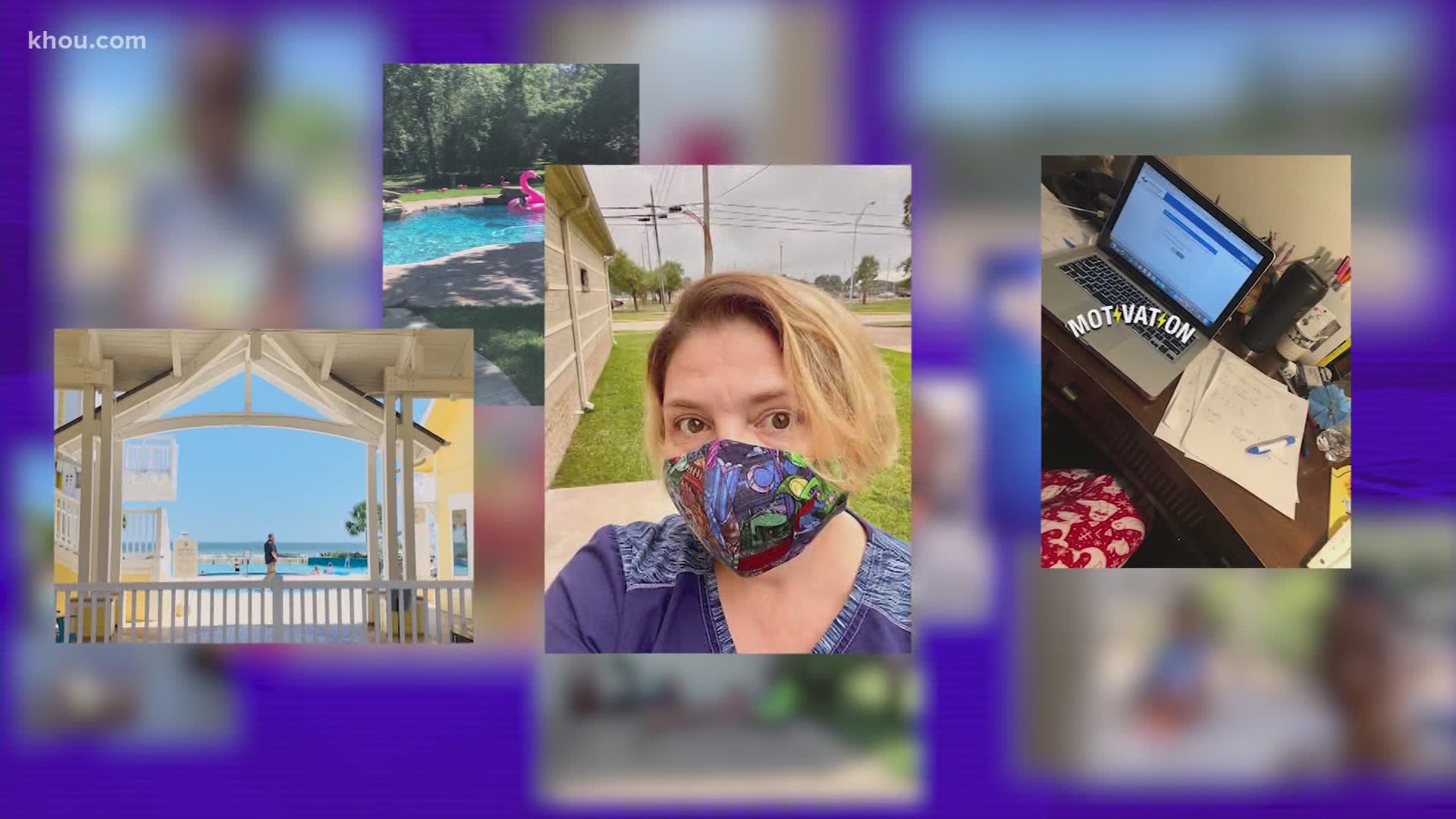HOUSTON — No more stay-at-home orders mean people are allowed to go back to doing some of their normal things like eating at their favorite restaurants.
For Katie and her family, it was some fun in the sun.
For Shawn, it’s been all about heading to work.
After Texas’ stay-at-home order expired, folks found ways to spend their day.
Some people wanted to be near the water.
Christine went fishing while Ingrid and her family hit the beach.
Others rushed to their favorite restaurants to eat after businesses reopened.
It was just another day for many who continue to work through this new normal.
Healthcare workers like Tamatha took a break from caring for patients to share this picture.
While others like Michael busted a move as a way to regroup.
However, the majority of people felt safest at home watching TV or hanging out in the backyard.
Amber kissed her kids who enjoyed the love and attention.
Rocio celebrated her son’s 8th birthday.
It seems people aren’t rushing back to their normal routines because they know the fight to stop the spread of coronavirus is far from over.
Coronavirus symptoms
The symptoms of coronavirus can be similar to the flu or a bad cold. Symptoms include a fever, cough and shortness of breath, according to the Centers for Disease Control. Some patients also have nausea, body aches, headaches and stomach issues. Losing your sense of taste and/or smell can also be an early warning sign.
Most healthy people will have mild symptoms. A study of more than 72,000 patients by the Centers for Disease Control in China showed 80 percent of the cases there were mild.
But infections can cause pneumonia, severe acute respiratory syndrome, kidney failure and even death, according to the World Health Organization. Older people with underlying health conditions are most at risk for becoming seriously ill. However, U.S. experts are seeing a significant number of younger people being hospitalized, including some in ICU.
The CDC believes symptoms may appear anywhere from two to 14 days after being exposed.
Human coronaviruses are usually spread through...
- The air by coughing or sneezing
- Close personal contact, such as touching or shaking hands
- Touching an object or surface with the virus on it, then touching your mouth, nose or eyes before washing your hands.
Help stop the spread of coronavirus
- Stay home when you are sick.
- Eat and sleep separately from your family members
- Use different utensils and dishes
- Cover your cough or sneeze with your arm, not your hand.
- If you use a tissue, throw it in the trash.
- Follow social distancing
Lower your risk
- Wash your hands often with soap and water for at least 20 seconds. If soap and water are not available, use an alcohol-based hand sanitizer.
- Avoid touching your eyes, nose, and mouth with unwashed hands.
- Avoid close contact with people who are sick.
- Clean and disinfect frequently touched objects and surfaces.
- If you are 60 or over and have an underlying health condition such as cardiovascular disease, diabetes or respiratory illnesses like asthma or COPD, the World Health Organization advises you to try to avoid crowds or places where you might interact with people who are sick.
Get complete coverage of the coronavirus by texting 'FACTS' to 713-526-1111.

